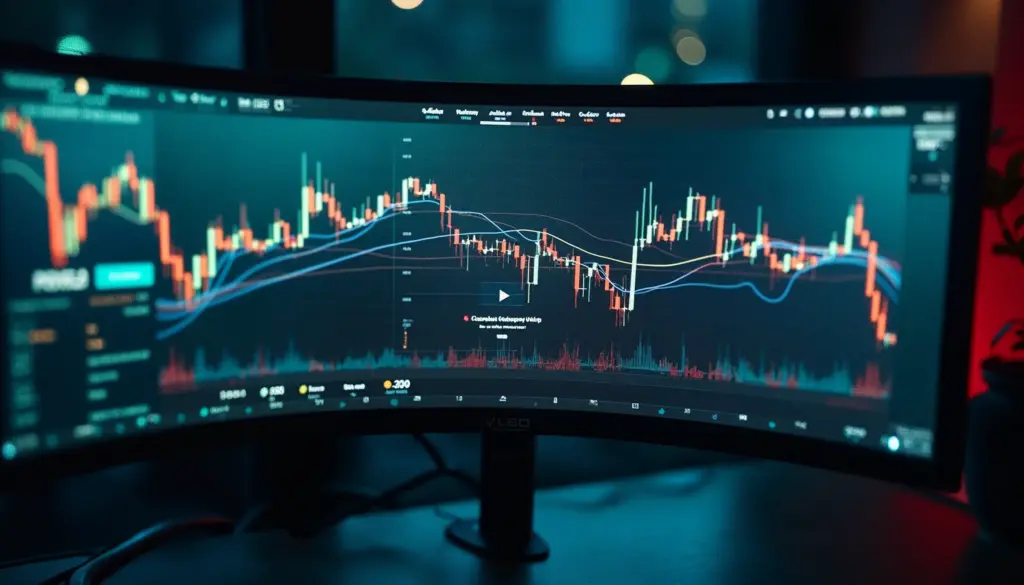Rate-Cut Tailwind and AI CapEx Super-Cycle: High-Momentum Stocks for Summer 2025

Federal Reserve Governor Michelle Bowman’s public willingness to cut rates as soon as the July FOMC shattered the narrative that tariff-driven inflation would keep policy on hold. Ten-year yields promptly dived 12 bp, the dollar softened, and the S&P 500 ripped back above its 50-dma at 5 300. Liquidity is abundant, and the three areas with the greatest beta to falling real yields are (1) the AI semiconductor stack, (2) cloud-based cybersecurity, and (3) rate-sensitive cyclicals such as homebuilders and regional banks. Each segment offers discrete entry levels, catalysts, and “what-if” contingencies tied to energy-led inflation.
1. Macro Set-Up—From Restrictive to Supportive in Six Weeks
After spending Q1 laser-focused on supply-side tariff shocks, the Fed’s top bank overseer just pivoted: Bowman now views labor slack as the bigger risk and is “open” to an immediate cut provided inflation remains contained. Markets price 22 % probability for July and 74 % for September. The result: a steepening bull curve favourable to duration-rich growth names. Treasury volatility (MOVE index) ticked below 90 for the first time since April, confirming the shift from “policy uncertainty” to “policy support.”
2. AI Semiconductor Stack—Why the Pull-Back Is a Gift
NVIDIA’s 13 % correction in mid-June broke a parabolic channel but held the psychologically critical $140 zone, roughly the 38.2 % retrace of its March-to-May rally. StockInvest notes six up-days out of ten and receding volume—classic “handle” behaviour in a cup-and-handle base.
Actionable Levels
- NVDA: Accumulate $142–$145; add through $149 (10-dma). Stop $138. Upside target $163, measured by prior flag.
- AMD: Churning between $179 resistance and $166 support; buy strength through $180, stop $168.
- ASML ADR: Pulled back to rising 50-dma €816; watch for bullish engulfing candle to enter.
Catalyst Path: Data-center capex budgets remain untouched even amid tariff chatter, because AI workloads are deglobalised. What if the cease-fire collapses and oil spikes? Semis historically outperform in the first 30 days of an oil shock (2003, 2019) due to defensive growth characteristics; that improves the risk-adjusted profile.
3. Cloud & Cybersecurity—Recurring Revenue Meets Liquidity Boom
Palo Alto Networks (PANW) and CrowdStrike (CRWD) both print fresh relative-strength highs versus XLK each time Treasury yields dip below 4.25 %. Monday’s intra-day saw precisely that as crude collapsed—PANW ripped 4 %. NASDAQ breadth remains thin, but these names sit atop stable 20-dma slopes, indicating constructive momentum. Risk discipline: trail stops 1.75 ATR below entry to avoid headline whips.
ETF Shortcut: The HACK ETF provides diversified cyber exposure; delta runs around 0.75 to QQQ, so pair with a light QQQ short if you want idiosyncratic factor purity.
4. Rate-Sensitive Cyclicals—Homebuilders and Regional Banks
With mortgage rates poised to fall, the ITB homebuilder ETF offers the cleanest pure-play. Watch 50-dma at $92 as dynamic support; an upside break of $97 opens $104 pattern target.
Regional banks (KRE ETF) meanwhile have lagged by 600 bp YTD but historically add 8–10 % in the 60 days after a first cut. Position early, not after the move. Use $50 as your invalidation level.
5. Technical Field Guide—Key Market Levels
The S&P 500 reversed off 5 930 support (Fibonacci 50 % retrace) and now eyes 6 065 resistance, according to FxPro wave analysis. As long as closes remain north of the 21-dma (5 980), the path of least resistance is higher. The VIX collapsing below the 100-day average has historically coincided with a 1-month median SPX gain of 3.4 %.
6. ETF Implementation—Building a Convex Portfolio
- SOXX (iShares Semiconductor): 28 % NVDA/AMD, liquid weekly options.
- XLK (Tech Select Sector): overweight megacap platforms; a lower-volatility companion.
- ITB (Home Construction) + KRE (Regional Banks): rate-cut cyclical barbell.
Overlay the stack with TLT July $105 calls (~0.25 delta) as synthetic long-duration hedge.
7. What-If Scenario—Oil-Induced Inflation Re-Spike
Suppose Hormuz tightens and Brent spikes to $110–$120. Headline CPI pops near-term, but the Fed is signalling it sees through supply shocks. Real rates could fall further if nominal yields lag the oil-driven CPI surge—bullish for growth equity duration. The only caveat is stagflation risk: watch breakeven inflation; if 5-year breakevens shoot above 3.5 %, rotate some NVDA exposure into quality cash-flow tech (MSFT, ORCL) and consider a long XLE overlay to neutralise sector beta.
8. Risk Management—Harnessing Volatility Rather than Fearing It
QQQ 30-delta implied volatility fell to 20 %—two vol-points below its one-year mean. That makes long-premium calendars attractive: buy July, sell June against it, capturing gamma into the Fed blackout window. For stock traders, insist on 1 %-of-NAV position sizing per growth name and keep a standing stop $40 below SPX futures—roughly the spot drawdown that forces systematic de-risking.
Conclusion—Liquidity Loves Growth, but Growth Needs Discipline
The macro dominoes are aligned: dovish Fed talk, cooling Treasury volatility, and relentless AI capex. That triad historically produces leadership from semiconductors and cloud security, followed by a cyclical catch-up. The playbook is clear: accumulate best-in-class AI hardware on controlled pull-backs, lean into cybersecurity for steady beta, and pre-position in homebuilders and regionals before the first cut arrives. Overlay with tactical hedges tied to oil and geopolitical volatility. If the Fed blinks—as it now signals it might—growth equity remains the premier asset in which to ride the wave, provided you obey technical guardrails and let data, not emotion, dictate position size. Trade the flow, question assumptions, and stay ruthless about risk: the summer of 2025 rewards the forward-thinker who can pivot as fast as the Fed.
